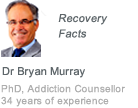Opium Addiction
Opium as a drug is infrequently used in its pure form today but opium addiction nevertheless is part of our society and addicts are often long-term abusers and so very difficult to rehabilitate. Opium or the opium poppy is grown in many countries across the world and is a virtual subsistence crop in Afghanistan and some south American countries, where it is grown as a cash crop and for the valuable food and other materials that are found in the plant.
Opium – Origins and other uses
Use of the opium poppy is known to have been a feature of life before recorded history and in fact there are images of it dating back 4000 years to ancient Sumeria. It was also known to the ancient Greeks who gave it its name. Use of opium as a drug dates back through at least the last 2000 years, and so has opium addiction. It has notably been used as a treatment for asthma, dyspepsia, stomach disorders and even bad eyesight, but its recreational and stimulant use dates back almost as far and wars have been fought over opium – the Chinese fought wars against the now defunct British Empire to stop the drug being imported into China by the British.
Opium’s anaesthetic powers were recognised many years ago and the opium poppy appear on the coat of arms of the Royal College of Anaesthetists in the United Kingdom.
Opium dens were frequently found wherever Chinese people landed and immigrated to the United States and the UK. These were establishments where opium was sold and smoked and were most often staffed by Chinese who would supply the drug and prepare it for the smokers, even supplying a wooden bed for them to lie down on and sink into a narcotic dream. A condition of ‘opium neck’ was noted in the early twentieth century where opium addicts would lay for so long that their neck became calloused.
Opium Addiction: Usage and effects
In its natural state opium is generally smoked or dissolved into a tincture. In the liquid form the effects take a while to be noticed as the drug has to pass through the stomach and undergo metabolism. When it is smoked the effects are felt almost immediately as the drug passes from the lungs directly into the bloodstream and no further metabolism is needed.
The addict will initially feel a burst of pleasure – commonly known as a ‘Rush’ – and during the period after that will descend into an extended time of lassitude and deep relaxation. There is a complete cessation of any forms of anxiety and any physical pain is obviated. The drug binds to the brains endorphin receptors and because opium floods these receptors the pleasure-state is enhanced many times.
One side-effect of opium addiction is constipation as the muscle movements necessary to move the bowel are inhibited. It is also effective in drying out the nasal and mucal passages and it has been noted that opium addicts do not suffer from colds.
The effects of a single dose will normally last up to four or five hours.
Over time those suffering opium addiction will develop a tolerance to the drug and will require larger and larger doses to achieve the same intensity and level of effect as when they started to use.
One of the biggest problems with opium addiction currently is that dealers or sellers of the drug will normally mix or adulterate it with similar appearing substances and so reduce the amount of actual drug supplied. The addict will buy larger and larger amounts of this ‘cut’ drug and if they are lucky enough to get a relatively pure quality buy will then overuse the drug – often to the point of death – because they do not realise how much of the actual drug they are receiving.
The long term effects suffered by opium addicts are not specifically caused by the drug but are more a result of the noxious materials with which street drugs are normally adulterated. But even pure opium users will suffer bronchial and bowel related disorders as well as a reduced immune system.
The Profile of an Opium Addict
Opium itself is generally limited to the upper echelons of society and it has long been seen as the drug of choice for the literary and intellectual classes. The addictive effects of opium are insidious – it is very rare for an opium addiction to form on the first or second use of the drug – but it is highly addictive to the mind of the users, frequently used by groups of people in a safe haven where they can fully enjoy the lassitude and relaxation that follows the first rush, and is very popular with students.
Recognising Opium Addicts
There are a number of reliable signs to look for in recognising if someone has an opium addiction:
- If the addict is smoking the drug there will often be a number of little burn marks either on their clothes or their skin
- Their skin will often develop a pale pallor and a waxy feel to the touch
- Their pupils will generally be pinpoints
- It is fairly common for the opium addict to sniff a great deal and alternate between periods of very dry nose and throat and running mucus
- Opium addicts are very often constipated and suffer from flatulence and wind as a consequence
Treating Opium Addicts
Because the side effects of withdrawal from opium addiction are severe and will often lead to depression and anxiety there is a high recidivism rate.The actual withdrawal process is itself very painful to the addict and the initial symptoms are flu-like but lead to a series of other physical issues:
- Stomach Cramps
- Muscle spasms
- Runny and watery eyes
- Constant runny nose
- Nausea and painful diahorrea
- Projectile vomiting
- Twitches
- Constant yawning, often to the point of dislocating the jaw
These symptoms can last anything up to a week as the body clears itself of all the toxins that have built up.
What is worse though is the feeling of depression and lack of worth that the addict experiences after the physical symptoms have subsided. Treatment of opium addiction must be approached both from a physical standpoint and holistically in order to resolve the emotional issues that will be the effect of withdrawal from opium addiction, and could have been underlying causes for the addict to start using opium in the first place.
Assistance by those friends and family remaining to the addict will be essential to help them rebuild their sense of self and self-worth and to enable them to feel forgiven – many opium addicts will have alienated their entire group and are often left feeling guilty, isolated and alone.
It is a great benefit to an opium addict if they can be treated in a sympathetic environment where their problems can be addressed.
Opium addicts will need counseling along with advice and holistic support in the form of yoga or fitness training along with acupuncture and massage, all of which will help them to get over the physical addiction and emotional debris remaining.












